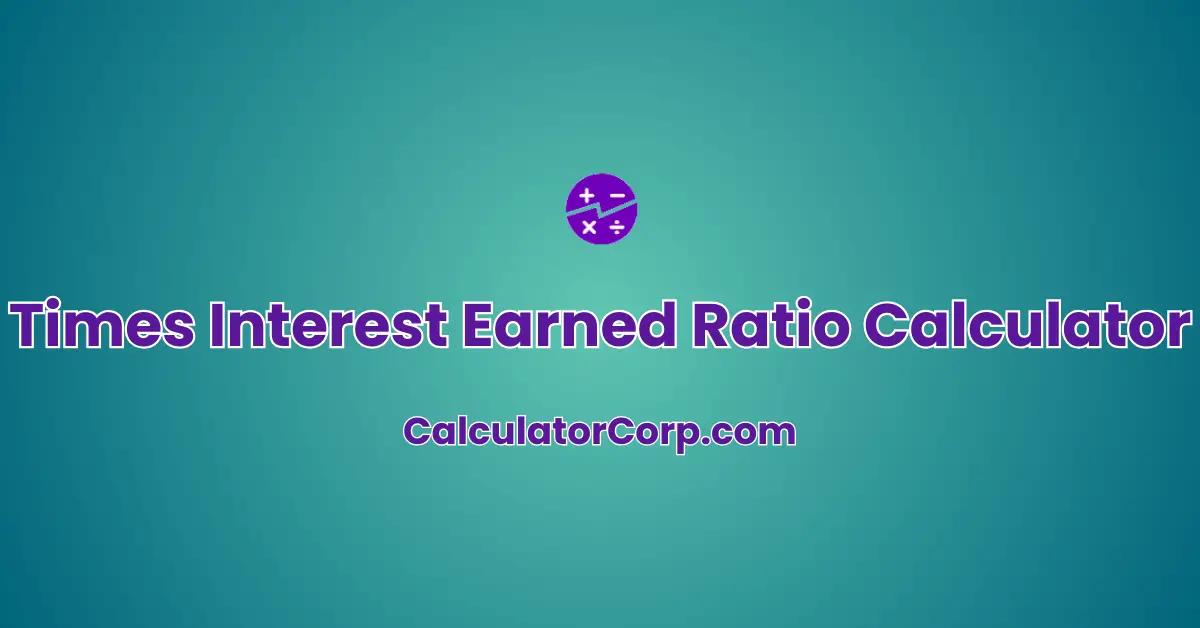Calculating the Times Interest Earned Ratio is crucial for assessing a company’s ability to cover its interest payments with its earnings. This financial metric offers insights into a company’s financial health and creditworthiness. Our Times Interest Earned Ratio Calculator simplifies this calculation for you.
Formula
The Times Interest Earned Ratio is calculated using the following formula:
TIE Ratio = Earnings (EBIT) / Interest Expense
Where:
- EBIT stands for Earnings Before Interest and Taxes.
- Interest Expense is the amount of interest a company owes.
How to Use?
Using our Times Interest Earned Ratio Calculator is straightforward. Follow these steps:
- Enter the company’s Earnings (EBIT) in the first input field.
- Input the Interest Expense in the second input field.
- Click the “Calculate” button to obtain the Times Interest Earned Ratio.
The result will be displayed in the designated input field.
Example
Suppose a company’s EBIT is $150,000, and its Interest Expense is $30,000. To find the Times Interest Earned Ratio:
- Enter Earnings (EBIT): 150000
- Enter Interest Expense: 30000
- Click “Calculate.”
The Times Interest Earned Ratio will be calculated as 5.00, indicating that the company can cover its interest payments five times over.
FAQs
Q: What is the Times Interest Earned Ratio used for?
A: The Times Interest Earned Ratio is used to assess a company’s ability to meet its interest payment obligations.
Q: What is considered a good Times Interest Earned Ratio?
A: A higher ratio is generally better, as it indicates the company can comfortably cover its interest payments. A ratio of 2 or higher is often considered acceptable.
Q: Can the Times Interest Earned Ratio be negative?
A: No, a negative ratio is not possible. It suggests that the company is incurring losses.
Q: How often should I calculate the Times Interest Earned Ratio?
A: It is recommended to calculate this ratio regularly, such as on a quarterly or annual basis, to track a company’s financial health.
Q: What is EBIT?
A: EBIT stands for Earnings Before Interest and Taxes, representing a company’s earnings before accounting for interest and income taxes.
Q: Is a higher EBIT preferable for this ratio?
A: Yes, a higher EBIT means a company has more earnings to cover its interest expenses, which is beneficial for the ratio.
Q: What if the Interest Expense is zero?
A: If the Interest Expense is zero, the Times Interest Earned Ratio will be undefined, as division by zero is not possible.
Q: Can this ratio be used for personal finance analysis?
A: While it’s primarily used in the corporate context, you could adapt it for personal finance by substituting your income for EBIT and your interest expenses for the Interest Expense.
Conclusion
The Times Interest Earned Ratio is a valuable financial metric for both investors and creditors, helping assess a company’s ability to manage its interest payments. Our Times Interest Earned Ratio Calculator simplifies the calculation process, making it easier to evaluate a company’s financial health.

